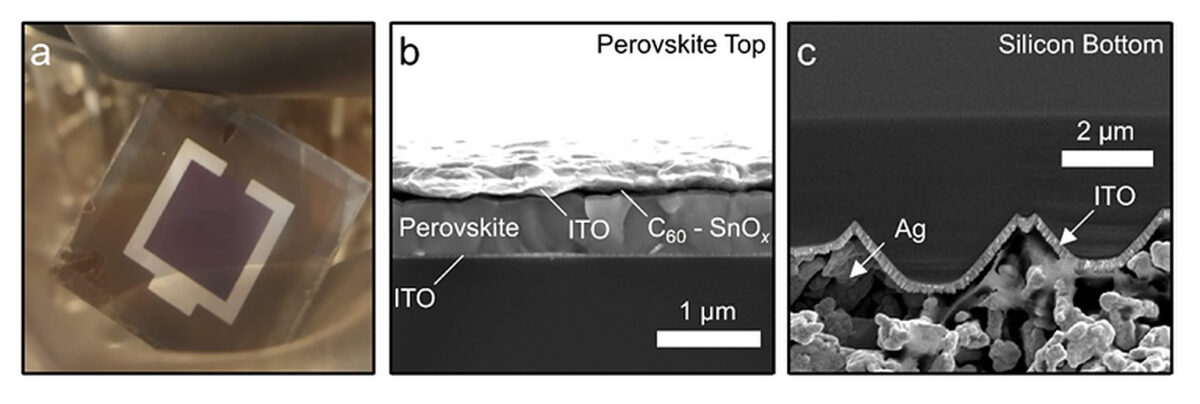A research group led by Delft University of Technology in the Netherlands has developed a new solar cell for applications in perovskite-silicon tandem PV devices.
“Our findings demonstrate the potential of using (n)nc-SiOx:H and (n)nc-Si:H interfacial layers in tandem solar cells to minimize reflection losses at the interfaces between the perovskite and silicon sub-cells,” said Yifeng Zhao, the lead author of the research. “Through optimizing interference effects, these light management techniques can be applied to various tandem structures.”
The perovskite solar cell, with a 19.1% efficiency, features an indium tin oxide (ITO) and glass substrate, a carbazole (2PACz) hole transport layer, a perovskite absorber, a buckminsterfullerene (C60) electron transport layer, a bathocuproine (BCP) buffer layer, and an aluminum (Al) metal contact.
In the tandem device, a nickel(II) oxide (NiOx) layer was employed at the recombination junction to reduce electrical shunting. The presence of hydroxyl-rich NiOx facilitated the assembly of 2PACz, resulting in reduced electrical shunts in the top cells. Additionally, an anti-reflective coating based on magnesium fluoride (MgF2) and the optimization of C60 and SnOx layer thickness helped minimize reflection losses.
The champion solar cell achieved a power conversion efficiency of 24.6%, an open-circuit voltage of 1.81 V, a short-circuit current of 18.1 mA/cm2, and a fill factor of 75.0%.
Popular content
By using (n)nc-Si:H and (n)nc-SiOx:H layers with thicknesses of around 95 nm and 115 nm, respectively, reflection reductions of 1.35 mA/cm2 and 1.51 mA/cm2 were achieved at the intermediate interfaces between the perovskite and c-Si bottom-cells, allowing for better light coupling into the bottom c-Si solar cells.
They presented the cell in “Optical Simulation-Aided Design and Engineering of Monolithic Perovskite/Silicon Tandem Solar Cells,” which was recently published in ACS Publications. The research group includes scientists from the Eindhoven University of Technology and the Netherlands Organisation for Applied Scientific Research (TNO).
“This technique can be adapted to different tandem designs to realize optimal light management in tandem devices,” the scientists concluded.
This content is protected by copyright and may not be reused. If you want to cooperate with us and would like to reuse some of our content, please contact: editors@pv-magazine.com.



4 comments
By submitting this form you agree to pv magazine using your data for the purposes of publishing your comment.
Your personal data will only be disclosed or otherwise transmitted to third parties for the purposes of spam filtering or if this is necessary for technical maintenance of the website. Any other transfer to third parties will not take place unless this is justified on the basis of applicable data protection regulations or if pv magazine is legally obliged to do so.
You may revoke this consent at any time with effect for the future, in which case your personal data will be deleted immediately. Otherwise, your data will be deleted if pv magazine has processed your request or the purpose of data storage is fulfilled.
Further information on data privacy can be found in our Data Protection Policy.